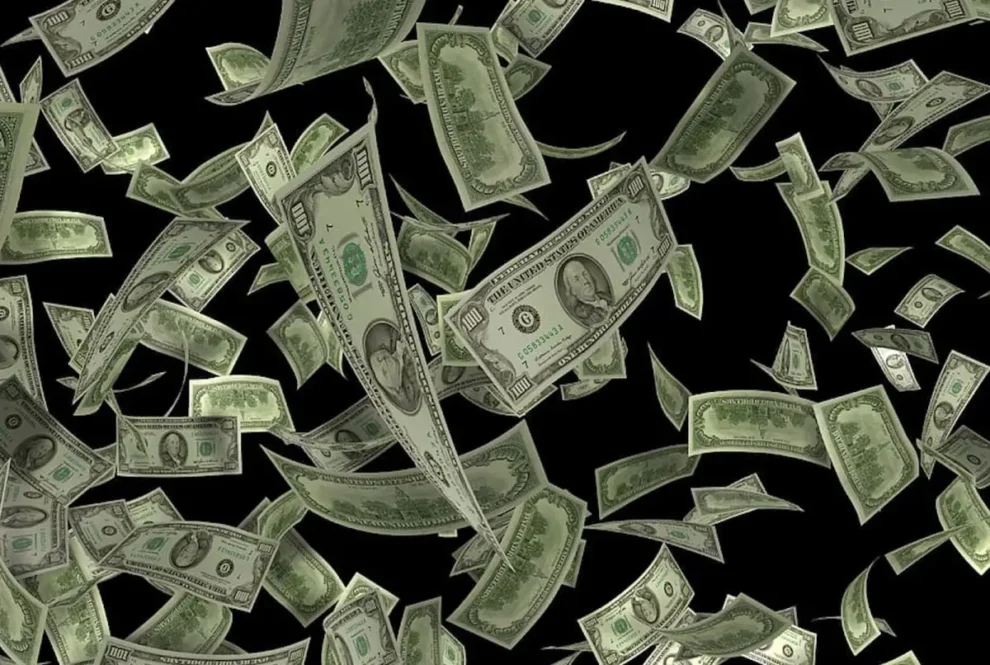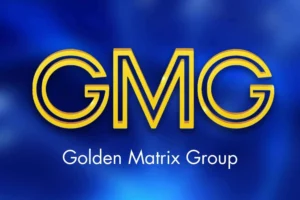As China draws down dollar holdings and the yuan trumps the US greenback in Russia, more and more economists are asking if an inflection point has been reached.
Count Nobel laureate Paul Krugman firmly in the “no” camp. “The dollar’s dominance isn’t under threat,” the New York Times columnist argues.
Others aren’t so sanguine as Asia’s biggest economy reduced its stockpile of US Treasury securities for a sixth straight month in January, the latest for which there is data on Beijing’s reserve holdings.
This week brought news that, in February, the Chinese yuan topped the dollar in trading volume in Russia for the first time. Daily transaction data at the Moscow Exchange suggest volumes rose even more significantly in March.
There’s no shortage of theories why. They include President Joe Biden’s White House “weaponizing the US dollar and the global payment system” amid the Russia-Ukraine crisis, as strategist John Mauldin at Millennium Wave Advisors, puts it.
That, he notes, “will force non-US investors and nations to diversify their holdings outside of the traditional safe haven of the US.”
Others point to the US letting inflation soar to 40-year highs. Political chaos in Washington — from the January 6, 2021 insurrection to today’s debt limit brawl — is doing America’s credit rating no favors.
Yet economist Mohamed El-Erian argues the real problem is how the Federal Reserve has lost more than just the economic plot. It’s losing the trust of central banks that took for granted that the dollar would outshine all alternatives indefinitely.
“The Fed’s problems should worry everyone,” says El-Erian, chief economic advisor at Allianz. “A loss of credibility directly affects its ability to maintain financial stability and guide markets in a matter consistent with the dual mandate of maintaining price stability and supporting maximum employment.”
After falling behind the inflation curve in 2021, the Fed has tightened aggressively since. Its most assertive tightening cycle since the mid-1990s is now pushing banks over the edge.
Recent banking turmoil “is casting doubt on America’s ability to maintain its leadership of the global monetary system,” notes economist Diana Choyleva at Enodo Economics. It now falls to Washington “to take decisive steps to shore up confidence, including extending dollar credit lines to a clutch of Asian countries.”
The “collapse of Silicon Valley Bank after a sharp rise in interest rates over the past year slashed the value of the bank’s bond holdings and put the spotlight on other weak banks,” Choyleva notes.
Credit Suisse’s “rapid demise” only added to the sense of global turmoil, she says. Yet, Choyleva says, the “longer-term ramifications” of the wrecking-ball dynamic the Fed has unleashed will have significant fallout over time.
“For it is in Asia,” she observes, “that the United States’ global financial hegemony is being most keenly contested — by China.”
Not that Chinese leader Xi Jinping’s currency is ready to displace the dollar. First, the yuan would have to be fully convertible and the People’s Bank of China would have to be fully independent from Communist Party meddling.
Yet Fed Chairman Jerome Powell’s missteps may be hastening this changing of the financial guard.
One irony is that the Fed’s monetary sledgehammer appears to be impeding the kinds of investment the US needs in productivity-enhancing technologies. The sense that the Fed is on the case may also be lulling Biden’s team into complacency on supply-side efforts to increase efficiency.
Yet the more the Fed’s austerity threatens bank blowups, the more Powell’s team chips away at trust in the world’s most powerful central bank. And the more America’s top bankers — most of them in Asia — will start looking for alternatives.
Asia’s top US debt holders are sitting on nearly US$3.5 trillion of Washington’s IOUs. Japan has the most, followed by China. Until now, Asia’s trade-reliant economies had little choice but to load up on dollars, both to facilitate trade and as a shield in times of crisis.
Yet 2023 marks the second time in 15 years that the call came from inside the house. The 2008 “Lehman shock” marked the first time Asia wondered if its savings were safe in US assets.
Since then, Washington’s national debt surged past the $31 trillion mark. Republicans threatening to default on debt now control the House of Representatives. And Biden’s approval ratings are in the 40s, giving him limited political capital to raise America’s economic game.
Add in a Fed that’s failing to read the room where global investors worry the dollar faces a near-perfect storm of threats.
Still, economist Nouriel Roubini notes that “you can’t replace something with nothing.” And it remains unclear which currency is ready to take the mantle of global standard. He cites the observation by former US Treasury Secretary Lawrence Summers that “Europe is a museum, Japan is a nursing home and China is a jail.”
China has the scale, of course, Roubini says. But, he adds, the yuan “can’t become a real reserve currency unless capital controls are phased out and the exchange rate made more flexible. Moreover, a reserve currency country needs to accept — as the US long has — permanent current account deficits in order to issue enough of the liabilities held by non-residents as a counterpart.”
At the same time, Roubini says, “all attempts to create a multipolar reserve currency regime — even an IMF Special Drawing Right basket that includes the renminbi — have so far failed to replace the dollar.”
Force of habit matters. As Krugman argues, “the dollar’s dominance is locked in because these roles are self-reinforcing. It’s easier to do transactions in dollars than in other currencies because so many other people use dollars, and the ease of transactions is one reason so many people use dollars.”
Krugman cites a 1960s observation by Princeton University economist Charles Kindleberger that the dollar’s dominance is akin to the role of English as an international language. Its centrality is a hard habit to break.
Economist Barry Eichengreen at the University of California, Berkeley, notes that much of the migration away from the dollar has been to smaller currencies with little chance of replacing the dollar, including the Australian and Canadian dollars, Swedish krona and South Korean won.
Russia, Eichengreen notes, is pivoting aggressively away from the dollar, and welcoming the yuan as a ready replacement. Yet, he asks, will other countries of scale also move in this direction?
Xi had talked about prodding Saudi Arabia to accept oil payments in yuan. China has also been setting up yuan-clearing arrangements with Pakistan, Argentina, and Brazil. And Iraq’s central bank is allowing direct yuan settlement for its trade with China.
“Yet this kind of broader shift is not yet visible in the data,” Eichengreen says.
Even so, the White House’s perceived weaponization of the world’s reserve currency via sanctions on geopolitical rivals – and the fallout from former president Donald Trump’s trade war – is now boomeranging on Washington while causing officials throughout Asia to worry the US doesn’t appreciate the longer-term consequences.
“The US dollar is a hex on all of us,” says George Yeo, former foreign minister of Singapore who’s now a visiting scholar at the National University of Singapore. “If you weaponize the international financial system, alternatives will grow to replace it” and the US dollar will lose its status.
Yeo says that “when this will happen, no one knows, but financial markets must watch it very closely.”
So must the Powell-led Fed. The recent move by OPEC+ – which includes Russia – to slash production by about 1.2 million barrels per day is a fresh test for the Fed’s tightening cycle.
“The anticipated increase in oil prices for the rest of the year as a result of these voluntary cuts could fuel global inflation, prompting a more hawkish stance on interest rate hikes from central banks across the world,” says analyst Victor Ponsford at Rystad Energy. “That would, however, lower economic growth and reduce oil demand expansion.”
In other words, if the Fed sees OPEC’s maneuver as a reason to continue raising rates, stagnation risks will surge along with turmoil in global markets.
James Bullard, president of the Fed Bank of St Louis, warns OPEC+ is playing with economic fire. “This was a surprise,” Bullard told Bloomberg. “Oil prices fluctuate around. It’s hard to track exactly. Some of that might feed into inflation and make our job a little bit more difficult.”
US Treasury Secretary Janet Yellen speaks for many when she calls the oil cartel’s decision an “unconstructive act.” Clearly, it makes life harder for her team to rebuild trust in the dollar at a moment when the biggest holders of US debt are anxious to find alternatives.
China, especially. Already high tensions with Washington are soaring anew as Biden limits Chinese access to vital technology and US officials meet with Taiwan President Tsai Ing-wen. As Chinese state mouthpiece Global Times argued in an April 5 op-ed: “China’s retaliation will be resolute and strong, and instigators will not be spared.”
Could that retaliation extend to dumping US Treasuries? Remember that back in August 2011, China mulled doing just that as then-US president Barack Obama cozied up to Taiwan. At the time, China’s state-run People’s Daily declared: “Now is the time for China to use its ‘financial weapon’ to teach the US a lesson if it moves forward” with arms sales to Taipei.
It falls to the Powell-led Fed to regain global trust in the dollar. As global markets are demonstrating, that trust is in diminishing supply.
Source : Asia Times



































